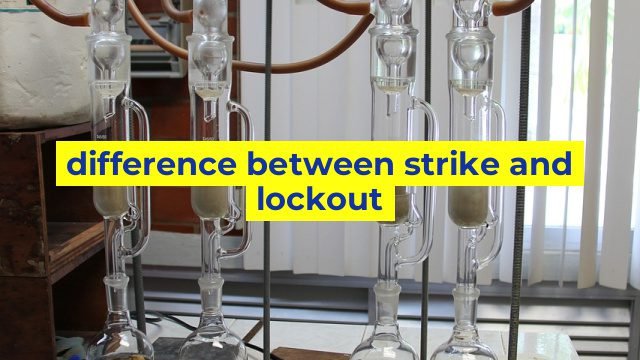Understanding the Differences Between Strike and Lockout
Introduction
Strikes and lockouts are two commonly used collective bargaining tactics that have been used for decades. While they are both used to enhance the position of workers and demand better working conditions, the two are different. In this article, we explore the differences between a strike and a lockout.
What is a Strike?
A strike is a work stoppage that is initiated by employees as a way to protest against their employer. In most cases, it is a concerted effort by a group of workers whose primary aim is to force their employers to accede to their demands. The issues raised may range from better pay, better working conditions, and automatic recognition of their union among others. A strike can take various forms, including a slowdown, a sit-in, or a complete cessation of work.
What is a Lockout?
A lockout, on the other hand, is initiated by the employer as a way to pressure employees to accept certain demands. In this case, the employer suspends or prevents employees from entering the workplace until their demands are met. The employer may take this avenue when negotiations have stalled or when they feel that workers are not productive enough.
Key Differences
The key difference between the two is that a strike is initiated by employees, whereas a lockout is initiated by the employer. The goal of a strike is to obtain better working conditions and pay, while the goal of a lockout is to exert pressure on employees to accept specific demands.
Another difference is that strikes usually result in the cessation of work, making it difficult for the employer to operate, while lockouts may involve hiring of new workers or outsourcing some of the work to keep operations running.
Conclusion
In summary, a strike and a lockout are both collective bargaining tactics used to achieve specific goals. Although they may have a similar effect on operations, the key difference between the two is who initiates it and their ultimate goals. Understanding these differences is essential for both employers and employees to make informed decisions when using these tactics.
Table difference between strike and lockout
| Type | Definition | Occurs when | Initiated by | Goal |
|---|---|---|---|---|
| Strike | A work stoppage caused by employees who refuse to work until their demands are met | Dispute between employees and employer over labor terms and conditions | Employees/Unions | To gain better wages, benefits or working conditions |
| Lockout | A work stoppage caused by employers who prevent employees from working by shutting down the workplace or blocking access to it | Dispute between employer and employees over labor terms and conditions | Employers | To pressurize employees to accept a less favorable deal by withholding pay and benefits |

